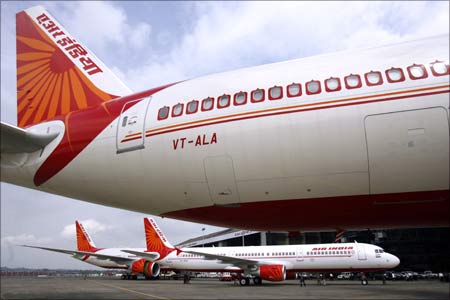
New Delhi, Apr 27 : An unserviceable oxygen bottle on an aircraft has cost Air India dearly and led to a delay of over 24 hours for the 245 passengers who were to fly from Frankfurt to Delhi on Friday night. Since the Dreamliner (VT-AOG) could not take off without this vital emergency equipment, all the flyers were put up in an expensive Frankfurt hotel.
"Oxygen bottles are critical emergency equipment meant to supply oxygen to pilots in the cockpit in the event of a drop in cabin pressure. Passengers and cabin crew have to breathe through overhead masks that are supplied oxygen through another O2 generator located in overhead panel. Pilots are supplied through separate bottles so that in case of cabin depressurisation or smoke, they do not suffer hypoxia (pass out due to O2 deficiency) which is an insidious killer — one of the worst possible scenarios for any aircraft and its passengers," said a source.
An AI official said the airline despatched another oxygen bottle on a flight to Frankfurt on Saturday morning. "Oxygen bottle does not come under minimum equipment list (that is it can be allowed to operate without an item that is on this list being operational). So the plane had to be grounded. This aircraft is now expected to take off late on Saturday night (India time)," said an AI official.
Oxygen bottles are meant to supply O2 to people inside an aircraft that has suffered cabin pressurization failure for about 15 minutes — the time in which the pilots declare an emergency and descend to 10,000 feet. Once at this level, the ram air valves of the aircraft are opened to allow outside fresh air to flow in.
"Two days back, another of our Boeing 787 suffered a wing spoiler trouble in Sydney. The flight was delayed by some time as this issue had to be sorted out first," said a source.
Cabin crew deported
An Air India cabin crew was deported from London for allegedly smuggling 100 to 200 cartons of cigarettes from India. The flight attendant had flown into London on a schedule flight to UK caught with the cigarettes. "He came back on a flight on which he was scheduled to operate as crew. DGCA rules mandate that there should be a cabin crew member for each aircraft door. With a crew short, one door was declared unserviceable," said an AI official.





Comments
Add new comment